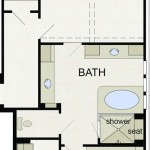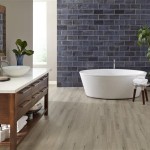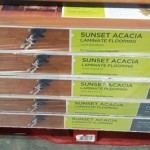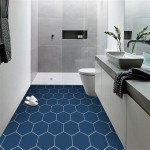New York Wood Flooring: Expertise and Options in New York, NY
New York City, with its diverse architectural landscape and discerning clientele, demands a high standard of quality and aesthetic appeal in interior design. Wood flooring, a timeless and versatile choice, remains a consistently popular option for residential and commercial spaces throughout the five boroughs. This article explores the landscape of wood flooring in New York, NY, examining the types of flooring available, considerations for selection, and the importance of professional installation.
The availability of diverse wood flooring options caters to the varied tastes and budgetary constraints of New York residents and businesses. From classic hardwood planks to engineered wood alternatives, the market offers a wide spectrum of materials, finishes, and styles. Understanding these options is crucial for making informed decisions and achieving desired outcomes.
Understanding Hardwood Flooring
Hardwood flooring comprises planks milled from a single piece of timber. Its inherent durability, natural beauty, and ability to be refinished multiple times contribute to its longevity and value. Common hardwood species include oak, maple, cherry, walnut, and hickory, each possessing unique grain patterns, color variations, and hardness ratings. The Janka hardness scale measures the resistance of a wood species to denting and wear, providing a useful benchmark for selecting appropriate flooring for different levels of foot traffic and activity.
Oak, a readily available and versatile hardwood, is a popular choice for its affordability and adaptability to various stain colors and finishes. Maple, known for its smooth grain and light color, offers a contemporary aesthetic. Cherry, with its rich, reddish-brown hues, adds elegance and warmth to interior spaces. Walnut, a premium hardwood, boasts a distinctive dark color and intricate grain patterns. Hickory, renowned for its exceptional hardness and durability, is well-suited for high-traffic areas.
Hardwood flooring is typically available in solid and engineered constructions. Solid hardwood consists of planks milled from a single piece of wood, while engineered hardwood features a veneer of hardwood bonded to a core of multiple layers of plywood or fiberboard. Engineered hardwood offers enhanced dimensional stability, making it less prone to warping or cupping in environments with fluctuating humidity levels. This characteristic is particularly advantageous in New York City, where seasonal changes can significantly impact indoor humidity.
The method of installation further distinguishes hardwood flooring options. Traditional nail-down installation, where planks are secured to a wooden subfloor with nails or staples, remains a common practice. Glue-down installation, where planks are adhered to a concrete or plywood subfloor with adhesive, provides a more stable and quieter flooring surface. Floating floor installations, where planks interlock and rest on a subfloor without nails or glue, offer ease of installation and removal. The choice of installation method depends on the subfloor type, environmental conditions, and desired performance characteristics.
Exploring Engineered Wood Flooring Alternatives
Engineered wood flooring presents a cost-effective and versatile alternative to solid hardwood. Its multi-layered construction provides enhanced dimensional stability, making it less susceptible to moisture damage and warping. The top layer, or veneer, consists of a thin layer of hardwood, offering the aesthetic appeal of solid hardwood at a lower price point. Engineered wood flooring is available in a wide range of wood species, finishes, and plank widths, catering to diverse design preferences.
The core layers of engineered wood flooring typically consist of plywood, high-density fiberboard (HDF), or composite materials. These core layers provide structural stability and resistance to moisture. The thickness of the veneer layer influences the longevity and refinishing potential of the flooring. Thicker veneers allow for multiple refinishing cycles, extending the lifespan of the flooring. Engineered wood flooring is a practical choice for basements, kitchens, and other areas prone to moisture exposure.
Luxury Vinyl Plank (LVP) flooring is another alternative gaining popularity in New York City apartments and commercial spaces.. While not technically wood, often emulates the look and feel of hardwood. LVP’s water resistance, durability, and ease of maintenance make it a sensible and cost-effective choice. High-quality LVP can provide a stunning look and feel reminiscent of solid hardwood flooring.
Essential Considerations for Selecting Wood Flooring
Selecting the appropriate wood flooring for a specific space requires careful consideration of several factors. Budgetary constraints, aesthetic preferences, anticipated foot traffic, and environmental conditions all play a crucial role in the decision-making process. Conducting thorough research and consulting with flooring professionals can ensure that the chosen flooring meets expectations and provides lasting value.
The finish applied to wood flooring significantly impacts its appearance, durability, and maintenance requirements. Polyurethane finishes, known for their durability and resistance to scratches and stains, are a popular choice for high-traffic areas. Oil-based finishes, which penetrate the wood fibers and enhance the natural grain, provide a warm and rich appearance. Water-based finishes, which emit lower levels of volatile organic compounds (VOCs), offer an environmentally friendly alternative. The sheen level of the finish, ranging from matte to high gloss, influences the overall aesthetic of the flooring.
The color of the wood flooring influences the ambiance of the space. Light-colored flooring creates a bright and airy atmosphere, while dark-colored flooring adds warmth and sophistication. The choice of color should complement the existing decor and furniture. Consider the amount of natural light in the room and how it will affect the appearance of the flooring. Samples of the flooring should be viewed under different lighting conditions to ensure that the color meets expectations.
Subfloor preparation is a critical step in the wood flooring installation process. A level and stable subfloor is essential for preventing unevenness, squeaking, and other issues. Concrete subfloors should be properly cleaned and leveled before installing any type of flooring. Uneven wood subfloors may require patching or replacement. Moisture testing of the subfloor is crucial to prevent moisture-related problems, such as warping and cupping.
The Importance of Professional Installation
Professional installation is essential for ensuring the longevity and performance of wood flooring. Experienced installers possess the knowledge and skills necessary to properly prepare the subfloor, install the flooring according to manufacturer specifications, and address any potential issues that may arise. Improper installation can lead to a variety of problems, including unevenness, squeaking, gaps, and premature wear. Hiring a reputable and licensed flooring contractor is a worthwhile investment that can save time, money, and frustration in the long run.
A professional installer will assess the subfloor conditions and recommend appropriate preparation measures. They will also ensure that the flooring is properly acclimated to the environment before installation. Acclimation allows the wood to adjust to the temperature and humidity levels of the space, preventing excessive expansion or contraction after installation. Proper acclimation minimizes the risk of gaps and warping.
Experienced installers possess the tools and equipment necessary for precise and efficient installation. They will use specialized saws, nail guns, and other tools to ensure that the flooring is properly fitted and secured. They will also take care to protect the surrounding surfaces from damage during the installation process. Professional installers are familiar with various installation techniques and can adapt their approach to suit the specific characteristics of the flooring and the space.
Furthermore, a professional installer can provide valuable advice on maintaining the wood flooring. They can recommend appropriate cleaning products and techniques to prolong the life of the flooring and prevent damage. They can also offer guidance on protecting the flooring from scratches and dents. Properly maintaining wood flooring is crucial for preserving its beauty and value.

About New York Wood Flooring Floors Installation Repair Company Nyc

New York City Showroom West Wood Hardwood Flooring

Floor Sanding Nyc Wood New York

Wood Floor Refinishing Nyc New York Ny Hardwood Flooring Floors

Laminate Flooring Materials For Brooklyn Ny

About Us Wood Floors

Wood Floors Tribeca Nyc

Wood Flooring Refinishing Manhattan Tribeca New York City Nyc Hardwood Floor

About Us Wood Floors

Solid Wood Flooring In East Moriches With Hardwood Floor Installation








